Accolades
2022 Faculty Book Summaries and Covers
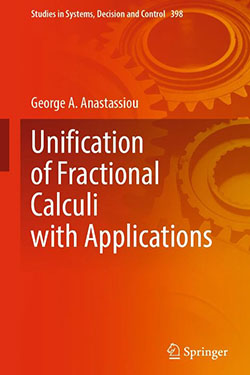 Unification of Fractional Calculi with Applications
Unification of Fractional Calculi with Applications
Authors: George A. Anastassiou
Presents applications in many areas of pure and applied mathematics
Specializes on fractional inequalities and fractional differential equations
Provides applications for applied sciences like geophysics, physics, chemistry, economics,
and engineering
This book demonstrates the unifying methods of generalized versions of Hilfer, Prabhakar and Hilfer–Prabhakar fractional calculi, and we establish related unifying fractional integral inequalities of the following types: Iyengar, Landau, Polya, Ostrowski, Hilbert–Pachpatte, Hardy, Opial, Csiszar’s f-Divergence, self-adjoint operator and related to fuzziness. Our results are univariate and multivariate. This book’s results are expected to find applications in many areas of pure and applied mathematics, especially in fractional inequalities and fractional differential equations. Other interesting applications can be in applied sciences like geophysics, physics, chemistry, economics and engineering. This book is appropriate for researchers, graduate students, practitioners and seminars of the above disciplines, also to be in all science and engineering libraries.
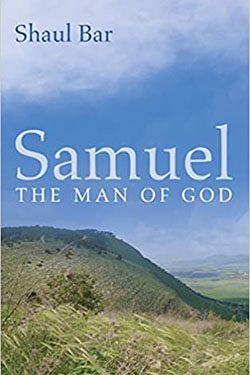
Samuel: The Man of God Hardcover – February 7, 2022
by Shaul Bar (Author)
Samuel, the man of God, was instrumental in the transition of a loose confederacy of Hebrew tribes to a centralized monarchy. The book of Samuel starts with his birth and ends with Saul's death on Mount Gilboa. The character of Samuel, who has been equally compared to Moses and Aaron, serves as a link between the various stories. In two major speeches Samuel rejects the idea of monarchy; still, as a loyal servant of the Lord, he anoints Saul as the first king of Israel and later, he anoints David.
Why did Samuel vehemently reject the idea of kingship? Did Samuel have his own agenda, and was his opposition to the monarchy motivated by his own personal aspiration? There are several titles that label him: priest, prophet, seer, judge, and the man of God. Who was Samuel? Nowhere else in the Hebrew Bible is there a description of a person such as Samuel, who was raised from the grave and delivered a message of doom. Readers of this volume will rediscover Samuel through a better understanding of achievements and failures.
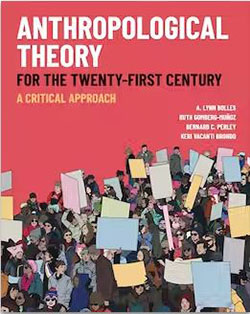 Anthropological Theory for the Twenty-First Century: A Critical Approach
Anthropological Theory for the Twenty-First Century: A Critical Approach
By A. Lynn Bolles, Ruth Gomberg-Muñoz, Bernard C. Perley and Keri Vacanti Brondo
Anthropological Theory for the Twenty-First Century presents a critical approach to the study of anthropological theory for the next generation of aspiring anthropologists. Through a carefully curated selection of readings, this collection reflects the diversity of scholars who have long contributed to the development of anthropological theory, incorporating writings by scholars of color, non-Western scholars, and others whose contributions have historically been under-acknowledged. The volume puts writings from established canonical thinkers, such as Marx, Boas, and Foucault, into productive conversations with Du Bois, Ortiz, Medicine, Trouillot, Said, and many others. The editors also engage in critical conversations surrounding the "canon" itself, including its colonial history and decolonial potential.
Updating the canon with late twentieth-century and early twenty-first-century scholarship, this reader includes discussions of contemporary theories such as queer theory, decolonial theory, ontology, and anti-racism. Each section is framed by clear and concise editorial introductions that place the readings in context and conversation with each other, as well as questions and glossaries to guide reader comprehension. A dynamic companion website features additional resources, including links to videos, podcasts, articles, and more.
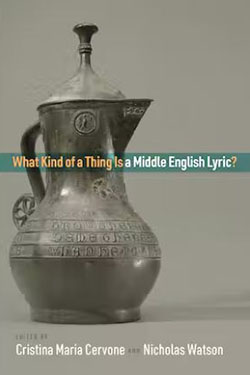 What Kind of a Thing Is a Middle English Lyric?
What Kind of a Thing Is a Middle English Lyric?
Edited by Cristina Maria Cervone and Nicholas Watson
What Kind of a Thing Is a Middle English Lyric? considers issues pertaining to a corpus of several hundred short poems written in Middle English between the twelfth and early fifteenth centuries. The chapters draw on perspectives from varied disciplines, including literary criticism, musicology, art history, and cognitive science. Since the early 1900s, the poems have been categorized as “lyrics,” the term now used for most kinds of short poetry, yet neither the difficulties nor the promise of this treatment have received enough attention. In one way, the book argues, considering these poems to be lyrics obscures much of what is interesting about them. Since the nineteenth century, lyrics have been thought of as subjective and best read without reference to cultural context, yet nonetheless they are taken to form a distinct literary tradition. Since Middle English short poems are often communal and usually spoken, sung, and/or danced, this lyric template is not a good fit. In another way, however, the very differences between these poems and the later ones on which current debates about the lyric still focus suggest they have much to offer those debates, and vice versa.
As its title suggests, this book thus goes back to the basics, asking fundamental questions about what these poems are, how they function formally and culturally, how they are (and are not) related to other bodies of short poetry, and how they might illuminate and be illuminated by contemporary lyric scholarship. Eleven chapters by medievalists and two responses by modernists, all in careful conversation with one another, reflect on these questions and suggest very different answers. The editors’ introduction synthesizes these answers by suggesting that these poems can most usefully be read as a kind of “play,” in several senses of that word. The book ends with eight “new Middle English lyrics” by seven contemporary poets.
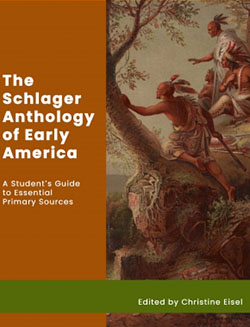 The Schlager Anthology of Early America: A Student's Guide to Essential Primary Sources,
Schlager Anthologies for Students
The Schlager Anthology of Early America: A Student's Guide to Essential Primary Sources,
Schlager Anthologies for Students
Edited by Christine Eisel
The Schlager Anthology of Early America offers a modern, original sourcebook covering a pivotal era in U.S. history. From the creators and publishers of Milestone Documents in American History, this new title is built on the principles of inclusivity and accessibility. While presenting the essential primary sources from the period ranging from the arrival of Europeans in North America to the eve of the American Revolution, this anthology also emphasizes often-marginalized voices, from women to Native Americans to African Americans. In addition, document texts are abridged to remain brief and accessible, even to struggling readers (including ESL students), while activity questions range in difficulty from basic to more advanced. Edited by Christine Eisel (University of Memphis) and featuring the contributions of numerous scholars, The Schlager Anthology of Early America covers 80 milestone sources from this period of American history.
An Inclusive Approach The Schlager Anthology of Early America is organized thematically into eight units. It begins with the chapter “Motivations for Exploration and Colonization.” The documents in this section invite readers to consider the events and environments that triggered European quests for acquiring goods, resources, land, and people in places an ocean away. Classic documents like Christopher Columbus's Letter to Raphael Sanchez and John Smith's Generall Historie of Virginia give insights on the potential and limitations that continued exploration and settlement could bring. Lesser known but equally valuable sources like Adriaen Van der Donck's Description of the New-Netherlands share similar themes and also point to the growing competition among European nations to exploit “new world” labor and resources, allowing readings to make connections between documents that demonstrate how explorers and eventual colonizers understood their own place within what became bigger colonization projects.
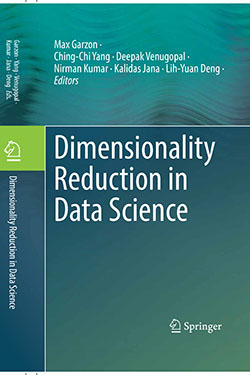 Dimensionality Reduction in Data Science
Dimensionality Reduction in Data Science
Editors: Max Garzon, Ching-Chi Yang, Deepak Venugopal, Nirman Kumar, Kalidas Jana, Lih-Yuan Deng
This book provides a practical and fairly comprehensive review of Data Science through the lens of dimensionality reduction, as well as hands-on techniques to tackle problems with data collected in the real world. State-of-the-art results and solutions from statistics, computer science and mathematics are explained from the point of view of a practitioner in any domain science, such as biology, cyber security, chemistry, sports science and many others. Quantitative and qualitative assessment methods are described to implement and validate the solutions back in the real world where the problems originated.
The ability to generate, gather and store volumes of data in the order of tera- and exo bytes daily has far outpaced our ability to derive useful information with available computational resources for many domains.
This book focuses on data science and problem definition, data cleansing, feature selection and extraction, statistical, geometric, information-theoretic, biomolecular and machine learning methods for dimensionality reduction of big datasets and problem solving, as well as a comparative assessment of solutions in a real-world setting.
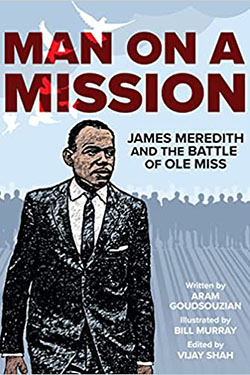 Man on a Mission: James Meredith and the Battle of Ole Miss Paperback – July 6, 2022
Man on a Mission: James Meredith and the Battle of Ole Miss Paperback – July 6, 2022
by Aram Goudsouzian (Author), Vijay Shah (Editor), Bill Murray (Illustrator)
In 1962, James Meredith famously desegregated the University of Mississippi (a.k.a. Ole Miss). As the first Black American admitted to the school, he demonstrated great courage amidst the subsequent political clashes and tragic violence. After President Kennedy summoned federal troops to help maintain order, the South—and America at large—would never be the same.
Man on a Mission depicts Meredith’s relentless pursuit of justice, beginning with his childhood in rural Mississippi and culminating with the confrontation at Ole Miss. A blend of historical research and creative inspiration, this graphic history tells Meredith’s dramatic story in his own singular voice.
From the dawn of the modern civil rights movement, Meredith has offered a unique perspective on democracy, racial equality, and the meaning of America. Man on a Mission presents his captivating saga for a new generation in the era of Black Lives Matter.
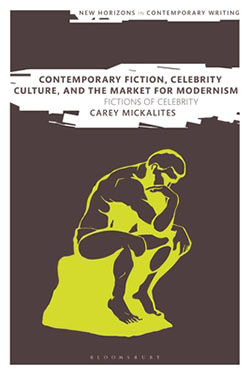 Contemporary Fiction, Celebrity Culture, and the Market for Modernism: Fictions of
Celebrity (New Horizons in Contemporary Writing) Hardcover – February 10, 2022
Contemporary Fiction, Celebrity Culture, and the Market for Modernism: Fictions of
Celebrity (New Horizons in Contemporary Writing) Hardcover – February 10, 2022
by Carey Mickalites (Author), Bryan Cheyette (Series Editor), Martin Paul Eve (Series Editor)
Arguing that contemporary celebrity authors like Zadie Smith, Ian McEwan, Martin Amis, Kazuo Ishiguro, Salman Rushdie, Eimear McBride and Anna Burns position their work and public personae within a received modernist canon to claim and monetize its cultural capital in the lucrative market for literary fiction, this book also shows how the corporate conditions of marketing and branding have redefined older models of literary influence and innovation.
It contributes to a growing body of criticism focused on contemporary literature as a field in which the formal and stylistic experimentation that came to define a canon of early 20th-century modernism has been renewed, contested, and revised. Other critics have celebrated these renewals, variously arguing that contemporary literature picks up on modernism's unfinished aesthetic revolutions in ways that have expanded the imaginative possibilities for fiction and revived questions of literary autonomy in the wake of postmodern nihilism. While this is a compelling thesis, and one that rightly questions an artificial and problematic periodization that still lingers in academic criticism, those approaches generally fail to address the material conditions that structure literary production and the generation of cultural capital, whether in the historical development of modernism or its contemporary permutations. This book addresses this absence by proposing a materialist history of modernism's afterlives.
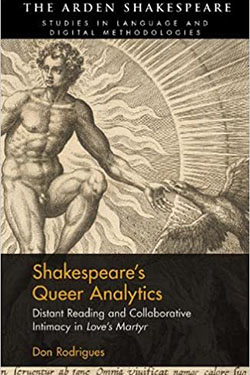 Shakespeare’s Queer Analytics: Distant Reading and Collaborative Intimacy in 'Love’s
Martyr' (Arden Shakespeare Studies in Language and Digital Methodologies)
Shakespeare’s Queer Analytics: Distant Reading and Collaborative Intimacy in 'Love’s
Martyr' (Arden Shakespeare Studies in Language and Digital Methodologies)
by Don Rodrigues (Author), Jonathan Hope (Series Editor), Michael Witmore (Series Editor), Lynne Magnusson (Series Editor)
What led Shakespeare to write his most cryptic poem, 'The Phoenix and Turtle'? Could the Phoenix represent Queen Elizabeth, on the verge of death as Shakespeare wrote? Is the Earl of Essex, recently executed for treason, the Turtledove lover of the Phoenix? Questions such as these dominate scholarship of both Shakespeare's poem and the book in which it first appeared: Robert Chester's enigmatic collection of verse, Love's Martyr (1601), where Shakespeare's allegory sits next to erotic love lyrics by Ben Jonson, George Chapman and John Marston, as well as work by the much lesser-known Chester.
Don Rodrigues critiques and revises traditional computational attribution studies by integrating the insights of queer theory to a study of Love's Martyr. A book deeply engaged in current debates in computational literary studies, it is particularly attuned to questions of non-normativity, deviation and departures from style when assessing stylistic patterns. Gathering insights from decades of computational and traditional analyses, it presents, most radically, data that supports the once-outlandish theory that Shakespeare may have had a significant hand in editing works signed by Chester. At the same time, this book insists on the fundamentally collaborative nature of production in Love's Martyr.
Developing a compelling account of how collaborative textual production could work among early modern writers, Shakespeare's Queer Analytics is a much-needed methodological intervention in computational attribution studies. It articulates what Rodrigues describes as 'queer analytics': an approach to literary analysis that joins the non-normative close reading of queer theory to the distant attention of computational literary studies – highlighting patterns that traditional readings often overlook or ignore.
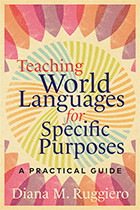 TEACHING WORLD LANGUAGES FOR SPECIFIC PURPOSES
TEACHING WORLD LANGUAGES FOR SPECIFIC PURPOSES
A Practical Guide by Diana M. Ruggiero
Learner-centered practical strategies, models, and resources for the development of world languages for specific purposes curricula
The world today is changing, and college-level language departments are rethinking and revamping their vision and curricular offerings as a result. The field of world languages for specific purposes (WLSP) presents a solution to these challenges, helping students develop language skills and intercultural competencies as they focus on content-based professional areas such as business, law, and medicine. As demand for these courses grows, teachers and administrators seek research-based information on how to develop and teach WLSP curricula.
This book bridges theory and practice, inviting scholars, educators, students, and professionals of all areas of world language specialization to create new opportunities for their students.
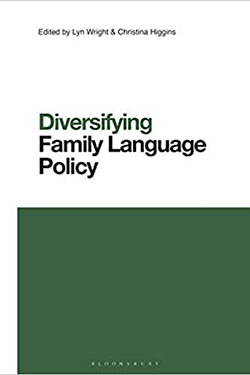 Diversifying Family Language Policy (Contemporary Studies in Linguistics)
Diversifying Family Language Policy (Contemporary Studies in Linguistics)
by Lyn Wright (Editor), Christina Higgins (Editor), Li Wei (Series Editor)
An increasingly important field of research within multilingualism and sociolinguistics, Family Language Policy (FLP) investigates the explicit and overt planning of language use within the home and among family members. However the diverse range of different family units and contexts around the globe necessitates a similarly diverse range of research perspectives which are not yet represented within the field.
Tackling this problem head on, this volume expands the scope of families in FLP research. Bringing together contributors and case studies from every continent, this essential reference broadens lines of inquiry by investigating language practices and ideologies in previously under-researched families. Seeking to better reflect contemporary influences on FLP processes, chapters use innovative methodologies, including digital ethnographies and autoethnography, to explore diverse family configurations (adoptive, LGBTQ+, and single parent), modalities (digital communication and signed languages), and speakers and contexts (adult learners, Indigenous contexts, and new speakers).
Bringing to light the dynamic, fluid nature of family and kinship as well as the important role that multilingualism plays in family members' negotiation of power, agency, and identity construction, Diversifying Family Language Policy is a state-of-the-art reference to contemporary theoretical, methodological and ethical advances in the field of family language policy.
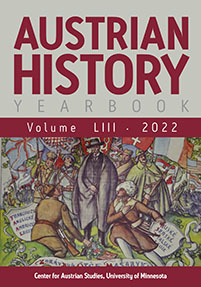 Austrian History Yearbook, 2022. Editor
Austrian History Yearbook, 2022. Editor
Editors: Maureen Healy Lewis & Clark College, USA, Howard Louthan University of Minnesota, USA, and Daniel Unowsky University of Memphis, USA Editorial board
Founded in 1965 by R. John Rath, the Austrian History Yearbook remains the only English-language peer-reviewed journal devoted to the history of the territories in Central Europe that were formerly under Habsburg rule and now comprise the modern states of Austria, the Czech Republic, Slovakia, Hungary, Slovenia, Croatia, Bosnia-Herzegovina and parts of Italy, Poland, Ukraine, Romania and Serbia. Typically, each issue of the Yearbook contains seven to eight articles, a forum on an important historical issue, a review article, and approximately 40 book reviews.
